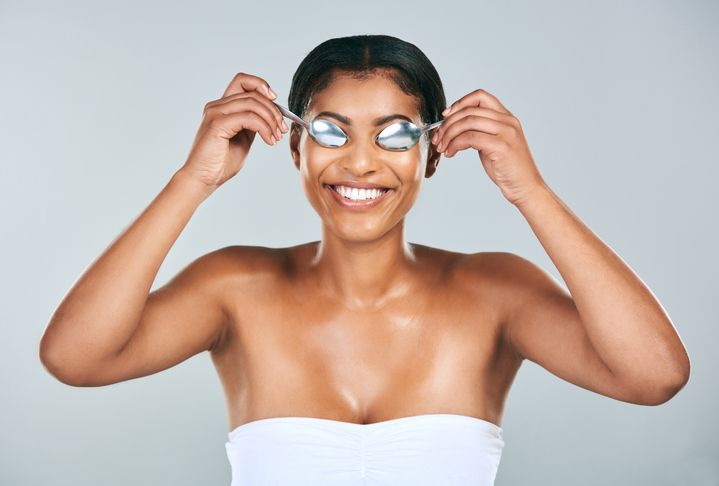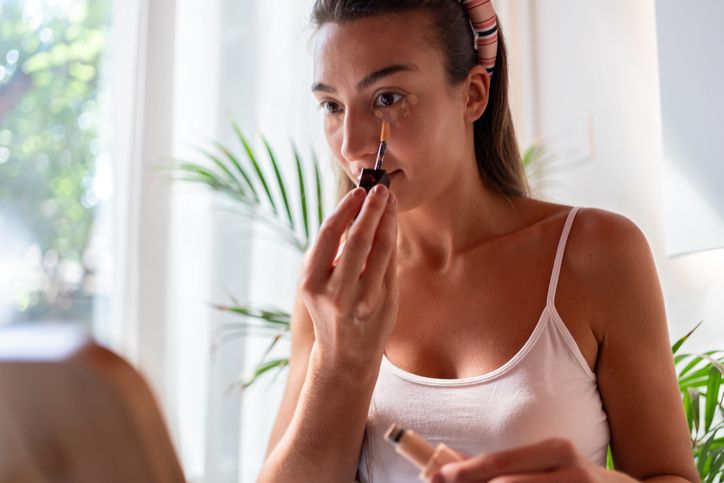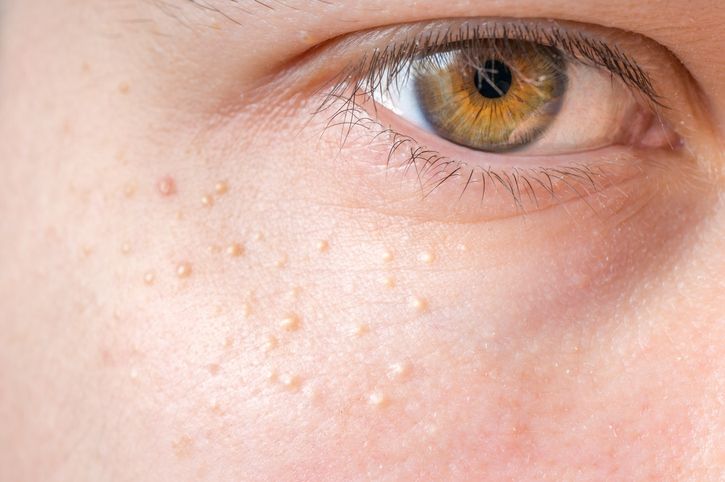- Home
- Trend
- Weight Loss Strategies
- Acne Tips
- Hair Health Information
- Blemish Removal Tips
- Acne Scar Removal Tips
- Muscle Building Techniques
- Intimate Care Tips
- Postpartum Intimate Care
- Eye Bags Wiki
- Tips for Face Slimming
- Secret of Permanent Hair Removal
- Breast Enlargement Tips
- Cure to Snoring
- Marionette Lines
- Skin-Tightening Secrets

免費體驗
R6 Miracle Eye Rescue Treatment
1 Minute Self-Registration
Date should not be before minimal date
Dark circles under the eyes – those unwelcome guests that seem to linger even after a good night's sleep. They cast shadows, making us appear tired, stressed, or even older than we truly are. But fear not, weary warriors of radiance! It's time for us to go deep into the science and solutions behind banishing these under-eye blues, from simple quick fix to cutting-edge medical treatments.
1
The Relationship Between Dark Circles, Puffy Eyes and Darker Skin Tones

1. Increased Visibility and the Role of Melanin
2. Blood Pooling, Oxidation, and Its Effects on Darker Skin
3. Inflammation, Swelling, and Pigmentation Changes
4. Hyperpigmentation and Its Amplified Impact
2
Differentiate Them Before Thinking of Getting Rid of Dark Circles

Vascular Dark Circles
Pigmented Dark Circles
Shadowed Dark Circles
Structural Dark Circles
Combination Dark Circles
3
Specific Emergency Fix To Reduce Dark Circles

For vascular dark circles
For pigmented dark circles
For shadowed dark circles
For circles due to structural changes
4
Topical Treatments: Targeted Allies in Treating Dark Circles

Eye Creams
Chemical Peels
Cold Tea Bags

免費體驗
R6 Miracle Eye Rescue Treatment
1 Minute Self-Registration
Date should not be before minimal date
5
Seeking Professional Help: When General Remedies Fall Short

1. Radiofrequency Therapy
2. Fillers
3. Medical-Grade Creams
6
Last Thoughts


免費體驗
R6 Miracle Eye Rescue Treatment
1 Minute Self-Registration
Date should not be before minimal date
FAQ

1. Can medical treatments effectively target the dark blood vessels beneath the skin to reduce dark circles under your eyes?
Yes, certain medical treatments can specifically target and shrink dilated blood vessels beneath the delicate skin under the eyes, which are a common cause of dark circles. Treatments such as laser therapy and certain topical creams can help improve skin colour and reduce the visibility of these underlying blood vessels, thereby reducing dark circles.
2. How does poor blood circulation contribute to dark circles under your eyes, and what are the treatment options?
Poor blood circulation can lead to the accumulation of blood in the dilated vessels beneath the skin under the eyes, causing a darkened appearance. Treatments aimed at improving circulation, such as eye massages, cold compresses, or eye counter pads, can help alleviate these types of dark circles. In some cases, medical treatments like laser therapy may also be recommended to shrink the blood vessels and improve the skin's appearance.
3. What role does skin pigmentation play in the formation of dark circles under your eyes, and how can they be treated?
Skin pigmentation around the eyes can lead to dark circles, often as a result of genetics, sun exposure, or ageing. Treatments to reduce this type of dark circle include topical creams containing ingredients like vitamin C, retinol, and hydroquinone, which can help lighten the skin. For more significant pigmentation issues, dermatologists might recommend chemical peels or laser treatments to even out skin colour and reduce dark circles.
4. Are there any quick solutions for reducing dark circles under your eyes caused by delicate skin or fast lifestyle?
While long-term solutions often involve consistent skincare routines or medical treatments, quick fixes like hydrating eye counter pads can offer temporary relief by moisturising and soothing the delicate skin under the eyes. Additionally, applying a cold compress can quickly reduce puffiness and shrink dilated blood vessels, helping to diminish dark circles fast. However, for lasting results, addressing underlying issues such as poor sleep, diet, or blood circulation is important.
5. How can addressing poor blood circulation and skin pigmentation simultaneously help in reducing dark circles under your eyes more effectively?
Dark circles are often the result of multiple factors, including poor blood circulation and skin pigmentation. By addressing both issues simultaneously, treatments can be more effective. For instance, lifestyle changes such as improving sleep and diet can enhance blood circulation, while topical treatments that target skin pigmentation can lighten the area.








